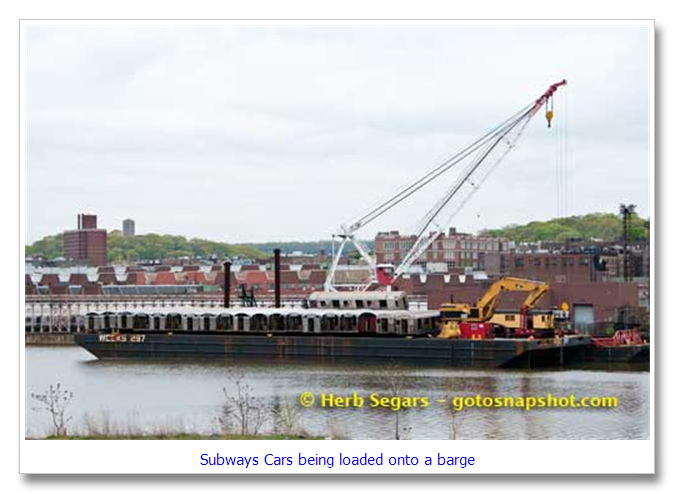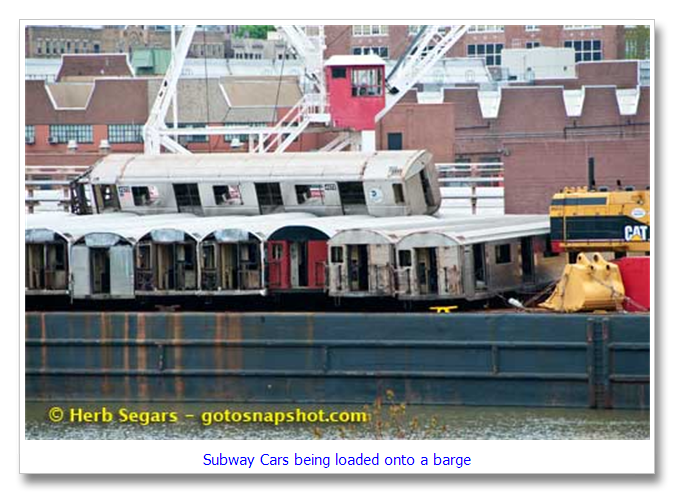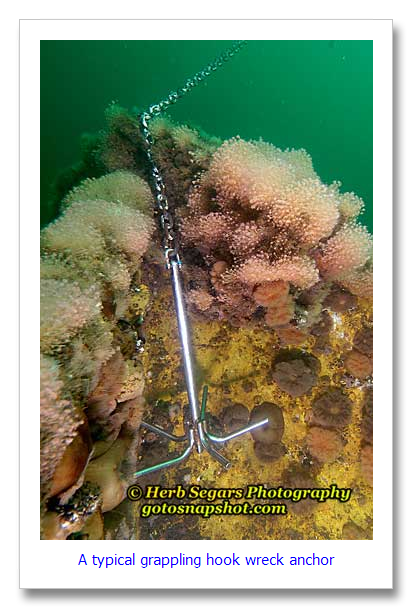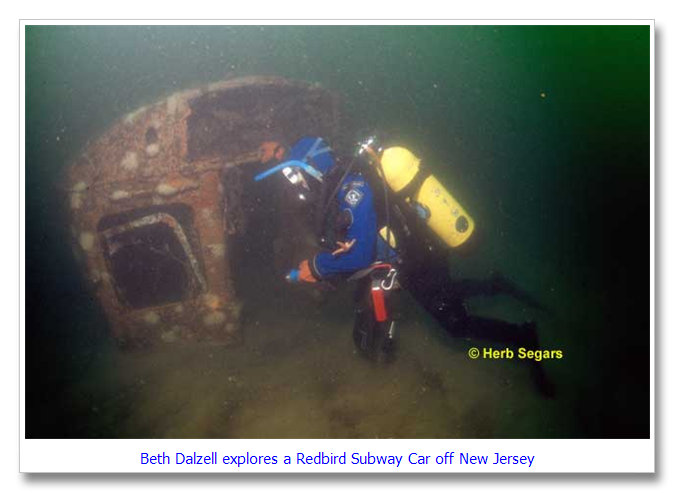My wife, Veronica, and I take our son, Tom, for hyperbaric oxygen treatments three times a week to Mt. Vernon, New York. On a good day, it is an hour and a half drive and on a bad day, it can easily get to three hours each way. While we are driving on I-87 (Major Deegan Expressway), we pass the 207th Street Subway Terminal on the Harlem River. This is where subway cars leave by barge on their trip to their final destination. In the past few years, the burial grounds have been as artificial reefs. I was doing a little research on line and I found a site where the barge that carries the subway cars had been affectionately named the “Death Barge”. I suppose that it is because it is taking them on their final trip. If they do work as artificial reefs then this is a beginning of a new purpose and not the end of one. I think that the first of the subway cars where sunk off New Jersey more than ten years ago. These were the Redbird Cars. Now, the popular sinking sites are off Maryland and Delaware. A lot of groups in New Jersey wanted the cars but there were others that were not so keen on having them. I am as avid a SCUBA diver as you can find and a great advocate of artificial reefs but I am not an advocate of subway cars. This has made me a pariah to many divers and fisherman. How has that happened?

I am a believer that things should not be just thrown into the ocean without considering the consequences. Many fishermen and divers believe that these subway cars are extremely important as artificial reef material. I believe that the cars deteriorate too quickly. I was reminded of this recently when someone sent me an email about the problem with using subway cars for artificial reefs. I told him that I had the opportunity to dive on a couple of Redbird Cars a few years ago on the Sea Girt Artificial Reef off Sea Girt, NJ. The cars had been down around ten years when my dive buddy, Beth Dalzell, of Brick, NJ and I made the dive. The first thing that we noticed was that a lot of the car was gone. One one car, we found an 8 foot long section of one end of the car and then nothing until we found the other end of the car. The majority of the car was missing.

We found the reason on another car. We found a large section of the roof lying in the sand next to the car. I believe that once the doors and windows are removed from the cars, there is very little meat left to withstand the forces caused by boats grappling into the cars.

Grappling is the standard method for anchoring into a wreck or artificial reef for fishing and SCUBA diving. I believe that the forces created by the grapples tore apart the cars. The person with whom I corresponded told me that I should change the way that I anchor into wrecks and artificial reefs. My preference is that things that are not going to hold up for long periods of time on the ocean bottom should not be put there as artificial reefs.
In February 2009, the State of New Jersey terminated a program that was in place to allow stainless steel subway cars as artificial reefs. The reason for the termination is that the cars were deteriorating much faster than expected. The initial estimate by the EPA was that the cars would last about 25 years on the bottom. A survey of 48 subway cars placed on the Atlantic City Reef off Absecon, NJ that had been down for seven months showed a great amount of damage. Out of 48 cars, 46 were destroyed. Apparently other states have also had problems with the stainless steel cars.
The redbird cars seem to have fared better underwater although we did not find that to be true on the redbirds that Beth and I dove off Sea Girt. They had been down about ten years and there was considerable damage to the cars.

My friend, Rich Galiano, who owns and operates njscuba.net, dove on redbird cars that were placed in 130 feet of water on the Shark River Artificial Reef. He dove them originally and then again five years later. He found that four of five cars that he dove on where still intact and one had been smashed (probably during sinking). I am not sure if this is because the cars are really holding up better than expected or that fishing and diving boats arte not grappling into the cars. There are in 130’ of water and unless you wanted to take photos of them, it is a pretty unimpressive dive. There are many more large reefs near the subway cars and I think that most divers and fishermen will be on the other sites. If you want to read more about subway cars and see more photos, please check out Rich’s subway car page here.
On May 7, 2010, Veronica, Tom and I drove past the 207th Subway Terminal and the crane that was on a barge on the Harlem River and which was used for loading cars onto the barge was gone. I am not sure if it is because there are no additional cars available or if it has simply been moved to another location.
© 2010, Herb Segars. All rights reserved.


Here’s an instructable from our artificial reef project in PLaya Hermosa, Costa Rica. I just put it up.
https://www.instructables.com/id/Build-an-Artificial-Reef/
We’re using concrete block and so far the fish and aquatic life love them. We’re adopting them out as “Fish Condos”. Its the first project of it’s kind to have Costa Rica government approval.